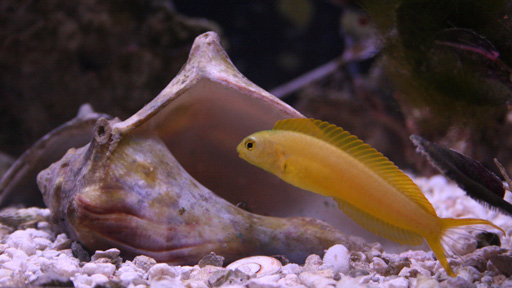
At first glance, this tiny, colorful fish may look harmless, but its sharp fangs can deliver an intoxicating dose of heroin-like venom that leaves potential predators powerless.
Sporting a pair of long canine teeth that protrude from their lower jaws, fang blennies are common near coral reefs in the Pacific and Indian oceans.

But one genus of the brightly-colored fish has more than just bite: their venom contains an unusual cocktail of toxins that includes opioids similar to heroin and morphine, according to research published in Current Biology.
Species from the Meiacanthus genus of blennies have grooved fangs which connect to venomous glands at the base of their jaw. When a predator tries to eat the blenny, the attacker is left stunned and sluggish.
Typically, a larger fish that takes a blenny into its mouth experiences a “quivering of the head” that lasts for several seconds, allowing the blenny to emerge unscathed from the fish’s distended mouth.

Researchers say it’s unusual for a fish to use its venom only as a defense mechanism.
Unlike other venomous fish, whose potent toxin causes intense pain, the blenny’s venom lowers an attacker’s blood pressure and makes them dizzy and uncoordinated. Most venomous fish also deliver their venom through spines on their backs, rather than fangs.
The technique is so effective that other species who lack the same powerful venom have evolved to mimic the blennies, imitating their bright colors, body shape and swimming style to escape predators. A few brave species even fool other fish long enough to eat their scales and flesh.




